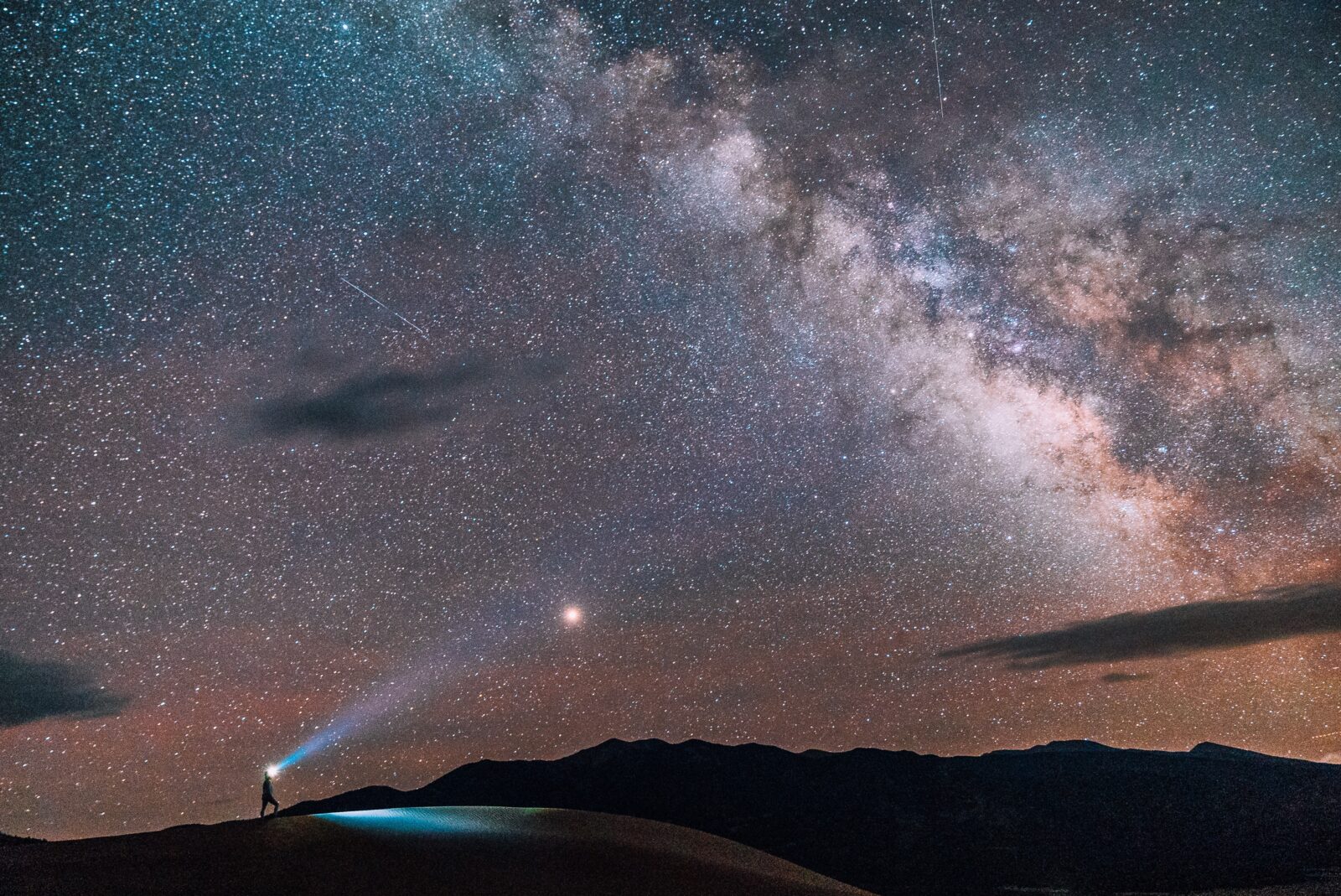You know, the universe has a knack for throwing curveballs just when we think we’ve got it all figured out. Recently, astronomers stumbled upon a cosmic odd couple—two stars pirouetting around each other in the chaotic dance hall near Sagittarius A* (Sgr A*), the supermassive black hole lounging at the Milky Way’s center. This discovery has left scientists scratching their heads and rethinking the rules of star formation in such extreme neighborhoods.
A Cosmic Pas de Deux Near Sgr A*
The newfound binary system, affectionately dubbed D9, orbits Sgr A*, a gravitational heavyweight with a mass about 4 million times that of our Sun. Spotting a stellar duo in this tumultuous region is akin to finding a delicate waltz in the midst of a mosh pit. The intense gravitational forces near Sgr A* were thought to be party poopers for binary systems, making this discovery as surprising as a snowstorm in July.
Florian Peißker, the lead researcher from the University of Cologne, expressed his astonishment: “We are actually in a really lucky situation. We observed the system just in time.” It’s as if the universe handed astronomers a backstage pass to a once-in-a-lifetime performance.
Young Stars in an Unlikely Neighborhood
What’s even more intriguing is the age of these stars. At a youthful 2.7 million years, they’re mere toddlers on the cosmic timescale. Surrounded by gas and dust—stellar nursery essentials—their presence suggests that the galactic center might not be the hostile, star-forming buzzkill it was once thought to be. This raises the tantalizing possibility that planets could also be born in these extreme conditions.
As Peißker mused, “It might only be a matter of time before we discover planets in the galactic center. These systems could be more resilient than we ever thought.” It’s like finding out that not only can roses grow in concrete, but they can also host a thriving bee colony.
The Fate of D9: A Celestial Cliffhanger
Don’t get too attached to D9, though. The powerful gravitational embrace of Sgr A* means these stars are destined to spiral closer and eventually merge, leading to a dramatic finale in their stellar saga. This impending union offers astronomers a front-row seat to study how binary systems evolve under the influence of a supermassive black hole.
Peißker noted, “The gravitational forces near Sgr A* are so strong that binary stars in this region will eventually spiral inward and merge, which will lead to an entirely new phase in the life of the system.” It’s the cosmic equivalent of a high-stakes soap opera, complete with unexpected twists and an inevitable climax.
The Enigmatic G Objects: Mergers or Mysteries?
Adding another layer to this astronomical mystery are the so-called G objects—peculiar entities that blur the line between stars and gas clouds. Some scientists speculate that these could be the remnants of binary stars like D9 that have already gone through their dramatic mergers, leaving behind enigmatic clouds of dust and gas.
As one astrophysicist put it, “This leaves some questions still open.” It’s a reminder that, in the grand tapestry of the cosmos, there are threads we’ve yet to untangle.
A New Era of Galactic Exploration
The discovery of D9 is just the opening act. With next-generation instruments like the Extremely Large Telescope (ELT) on the horizon, astronomers are gearing up to explore the galactic center in unprecedented detail. Who knows what other cosmic surprises await?
As Peißker suggests, “We are actually in a really lucky situation. We observed the system just in time.” It’s an exciting time to be peering into the heart of our galaxy, where each discovery challenges our understanding and invites us to look deeper into the cosmic abyss.












Leave a Reply